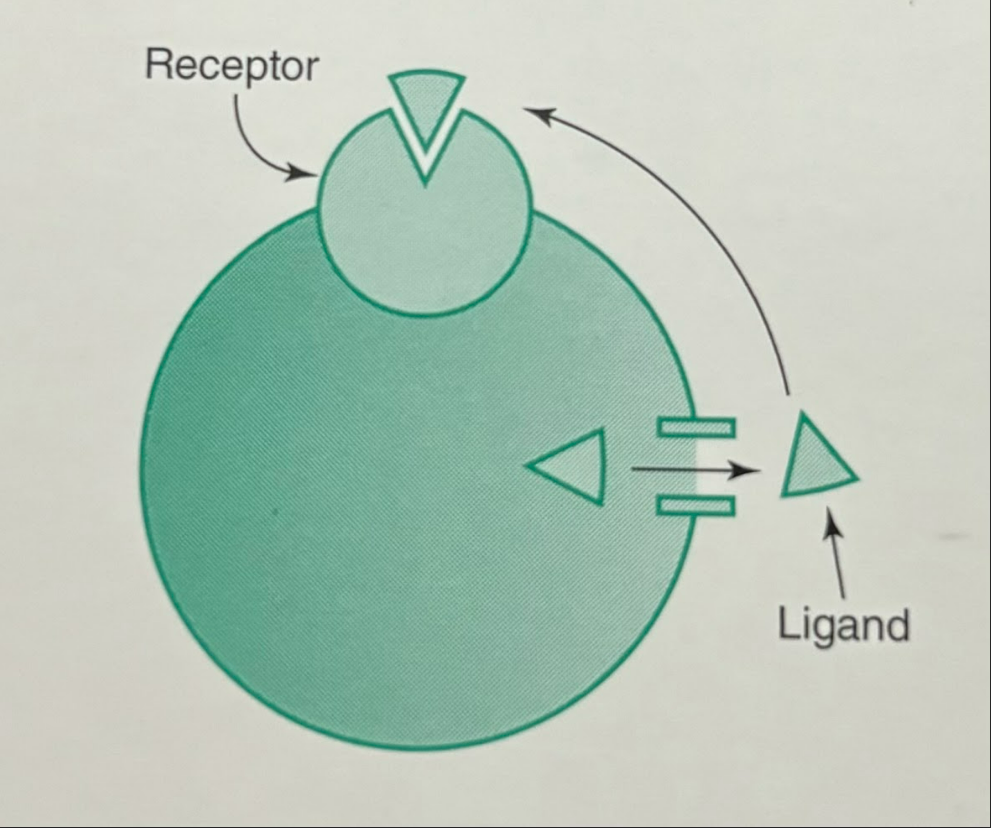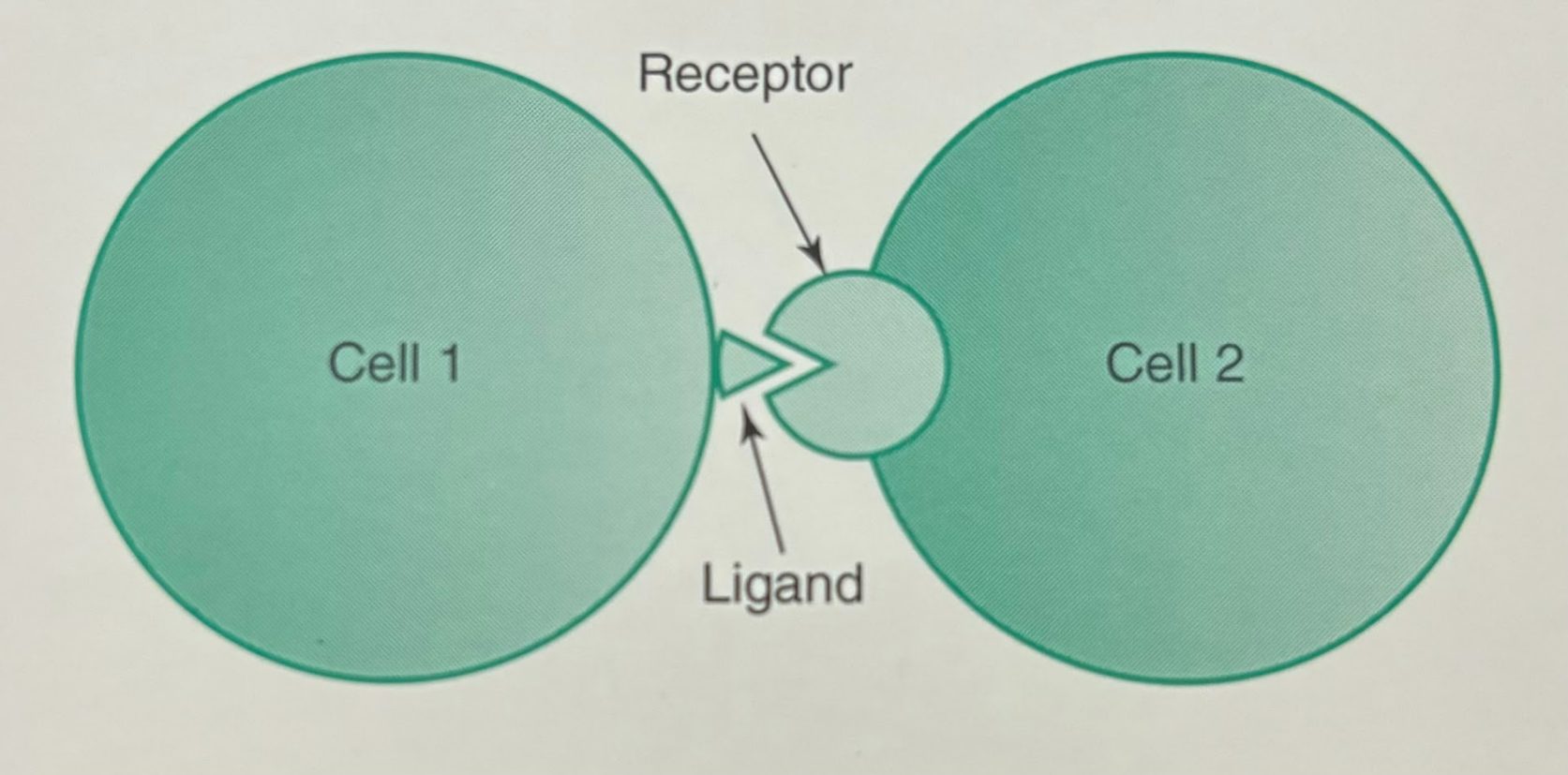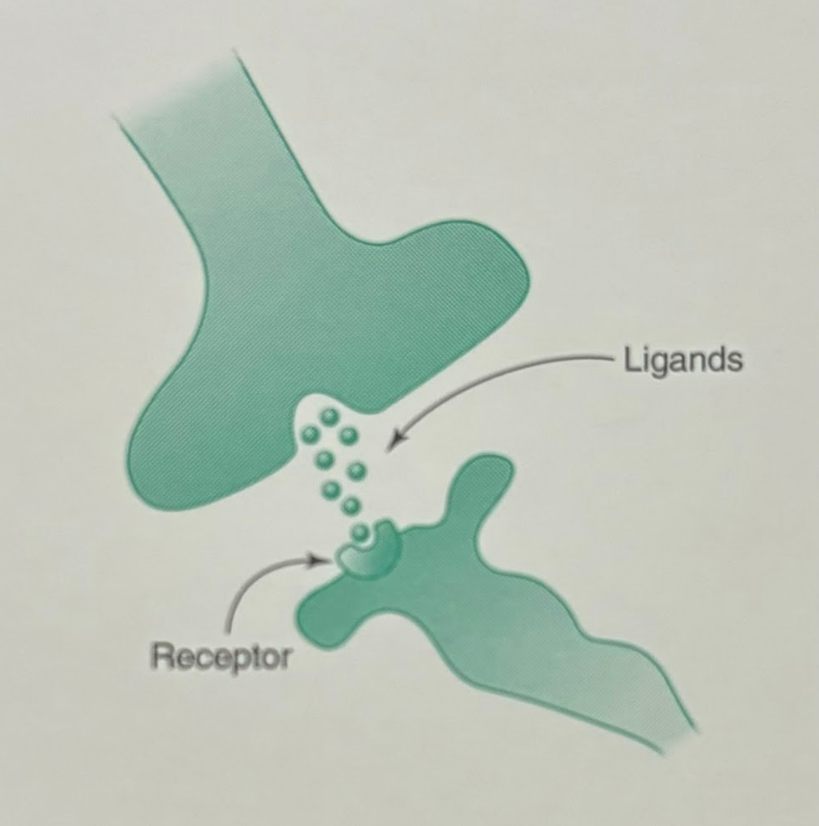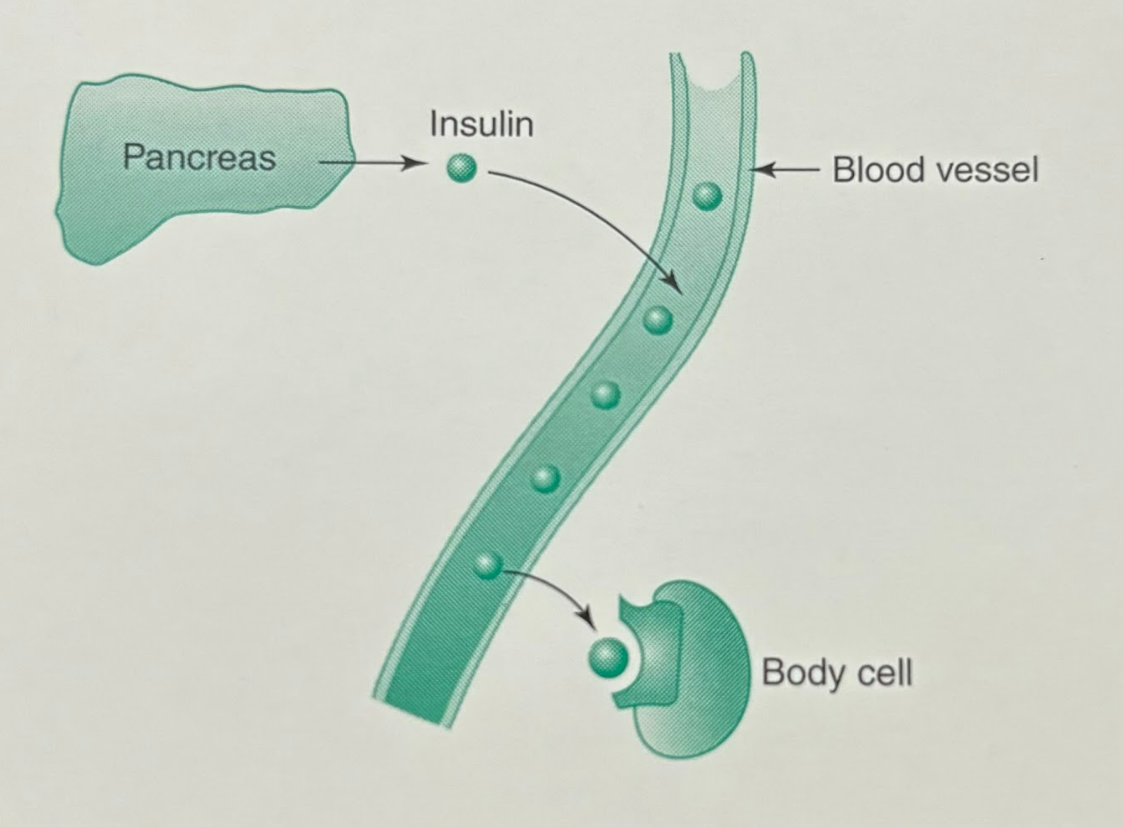AP Biology Unit 4 Terms
1/38
Earn XP
Description and Tags
Name | Mastery | Learn | Test | Matching | Spaced |
|---|
No study sessions yet.
39 Terms
Ligand
A chemical signal that binds to a receptor protein, triggering the cell signaling process.
Autocrine Signaling
Signaling process when a cell releases a ligand that binds to a receptor on the same cell, starting the cell signaling process. In autocrine signaling, the ligand-releasing cell and the target cell are the same cell. Examples of autocrine signaling include cancer cells, which release growth factors that stimulate the growth of their own cells.

Juxtacrine Signaling
Signaling process where the ligand-releasing cell is in direct contact with the target cell that possesses the receptor for the ligand. Examples of juxtacrine signaling include the interaction between an antigen presenting cell and a helper T cell in the immune system.

Paracrine Signaling
Signaling process where the ligand-releasing cell releases a ligand that has an effect on target cells that are near to the ligand-releasing cell. An example of paracrine signaling is synaptic signaling between neurons.

Endocrine Signaling
Signaling process where the ligand-releasing cell releases a ligand that travels long distances to target cells. An example of endocrine signaling is the effect of insulin on target cells far from the pancreatic cells that released the insulin.

Cell Membrane Receptors
Proteins embedded in the cell membrane that receive signals from ligands outside the cell. When cell membrane receptors bind to extracellular ligands, a shape change occurs in the cell membrane receptors, which starts the cell signaling process. Cell membrane receptors typically bind to hydrophilic ligands that cannot cross the cell membrane.
Hormones
Ligands involved in cell signaling that travel long distances from the ligand-releasing cell to the target cell.
Signal Transduction
The process by which a cell responds to a ligand through a series of chemical reactions inside the cell, leading to a response in the cell.
Target Cells
Cells containing the receptor for a specific ligand that can respond to the binding of the ligand to the receptor. Cells cannot respond to ligands for which they do not have the appropriate receptor.
Intracellular Receptors
Proteins within the cell that binds to ligands. These cytoplasmic receptors typically bind to hydrophobic ligands that have crossed the membrane of the cell and entered the cytoplasm.
Signal Amplification
A series of chemical reactions in which each molecule activates multiple molecules, amplifying the cell’s response to a signal.
Kinases
Enzymes that add phosphate groups to other molecules, often activating those molecules.
Phosphatases
Enzymes that remove phosphate groups from other molecules, often deactivating those molecules.
Adenylyl Cyclase
An enzyme that converts ATP into the secondary messenger cyclic AMP. Cyclic AMP is an important secondary messenger in cell signaling.
Secondary Messengers
Intracellular signaling molecules that create chemical changes in a cell in response to the reception of chemical signals. Examples of secondary messengers include cyclic AMP and the calcium ion (Ca2+).
Cyclic AMP
A secondary messenger formed from ATP by the enzyme adenylyl cyclase.
Negative Feedback
Negative feedback occurs when a stimulus triggers a response that returns the system to homeostasis. For example, an increase in body temperature in humans triggers sweating, which reduces body temperature.
Positive Feedback
Positive feedback occurs when a stimulus triggers a response that increases the strength of the stimulus, moving the system further from homeostasis. An example of this is ethylene, which stimulates fruit ripening. Ripening fruit releases more ethylene, which will stimulate even faster ripening.
Interphase
The stage of the cell cycle between cell divisions, which includes the G1, S, and G2 phases. During interphase, the cell grows, replicates its chromosomes, and prepares for mitosis.
Mitosis
The stage of the cell cycle in which replicated chromosomes are separated into two new nuclei. Mitosis consists of prophase, metaphase, anaphase, and telophase.
Cytokinesis
The division of the cytoplasm at the end of mitosis or meiosis. In cells without a cell wall, a cleavage furrow forms to divide the cytoplasm. In cells with a cell wall, a cell plate is formed, as well as a cleavage furrow.
G1
A growth phase during interphase of the cell cycle, during which the cell grows and cellular organelles are replicated. G1 precedes the S phase.
S
The phase of interphase in which the DNA is replicated. At the end of the S phase, a cell contains twice the amount of DNA that is had at the beginning of the S phase. The S phase follows G1 and precedes G2.
G2
The phase of interphase following the S phase, during which the cell continues to grow and prepare for mitosis.
Prophase
The phase of mitosis during which the chromatin condenses into visible chromosomes and the spindle fibers form the nucleus. Prophase follows interphase and precedes metaphase.
Metaphase
The phase of mitosis during which the chromosomes align along the center of the cell (also known as the metaphase plate). Metaphase follows prophase and precedes anaphase.
Anaphase
The phase of mitosis during which the centromeres of the chromosomes split and the two chromatids separate and begin to move to opposite sides of the cell. At this point, each chromatid has its own centromere and is considered a separate chromosome. Anaphase follows metaphase and precedes telophase.
Telophase
The phase during which two new nuclei are formed. Telophase follows anaphase and usually precedes cytokinesis.
G0
The phase of the cell cycle during which a cell is not actively dividing. Fully differentiated cells are in G0. Cellular signals may cause a cell to either enter or leave G0 depending on cellular conditions.
Checkpoints
Checkpoints regulate the progression of the cell cycle. Checkpoints occur at multiple points in the cell cycle and can stop the cell cycle if defects in components necessary for cell division are detected. Checkpoints may prevent mutated cells from dividing and causing tumors.
Cyclins
Proteins whose levels vary throughout the cell cycle. Cyclins bind with cyclin-dependent kinases to form mitosis promoting factor (MPF). When levels of MPF are high enough, a cell will enter mitosis.
Cyclin-Dependent Kinases
Proteins which, when bonded to cyclins, form mitosis-promoting factor (MPF). When levels of MPH are high enough, a cell will enter mitosis. Levels of cyclin-dependent kinases are relatively during the cell cycle.
Mitosis-Promoting Factor (MPF)
Mitosis-promoting factor. This is a complex of cyclin-dependent kinases bound to cyclin proteins. High levels of mitosis-promoting factor will signal a cell to start mitosis.
Density-Dependent Inhibition
The process in normally dividing cells in which cells that exceed a particular density stop dividing. Density-dependent inhibition stops uncontrolled cell division. Malignant cells do not exhibit density-dependent inhibition.
Anchorage Dependence
In some cell types, cells must be attached to a surface to continue dividing. Malignant cells do not exhibit anchorage dependence.
Proto-Oncogenes
Genes that stimulate normal rates of cell division. If a proto-oncogene is mutated, it may become an oncogene, which stimulates excessive rates of cell division. Proto-oncogenes are analogous to the accelerator on a car because they stimulate cell division.
Oncogenes
Cancer-causing genes that stimulate excessive rates of cell division.
Tumor Suppressor Genes
Genes that detect defects in DNA replication and will stop the cell cycle if mutations are detected. Tumor suppressor genes are analogous to the brakes on a car because they stop cell division from proceeding.
Apoptosis
Programmed cell death. Apoptosis may occur if mutations are detected in a cell. Apoptosis also occurs during development. For example, in embryonic development, fingers are initially connected by a weblike structure; at the appropriate time in development, apoptosis eliminated this weblike structure, resulting in separated fingers.